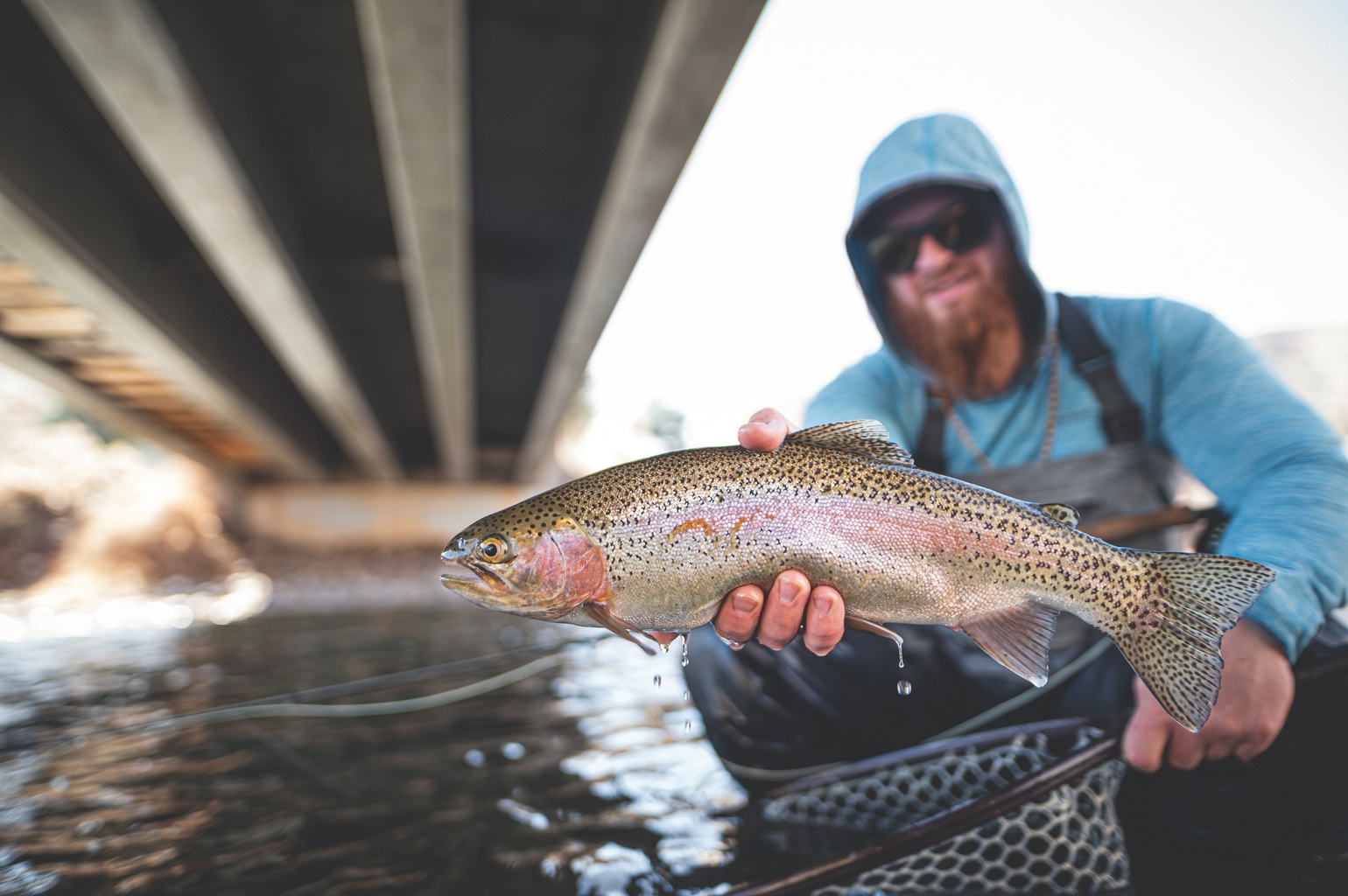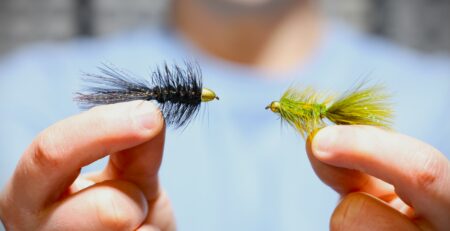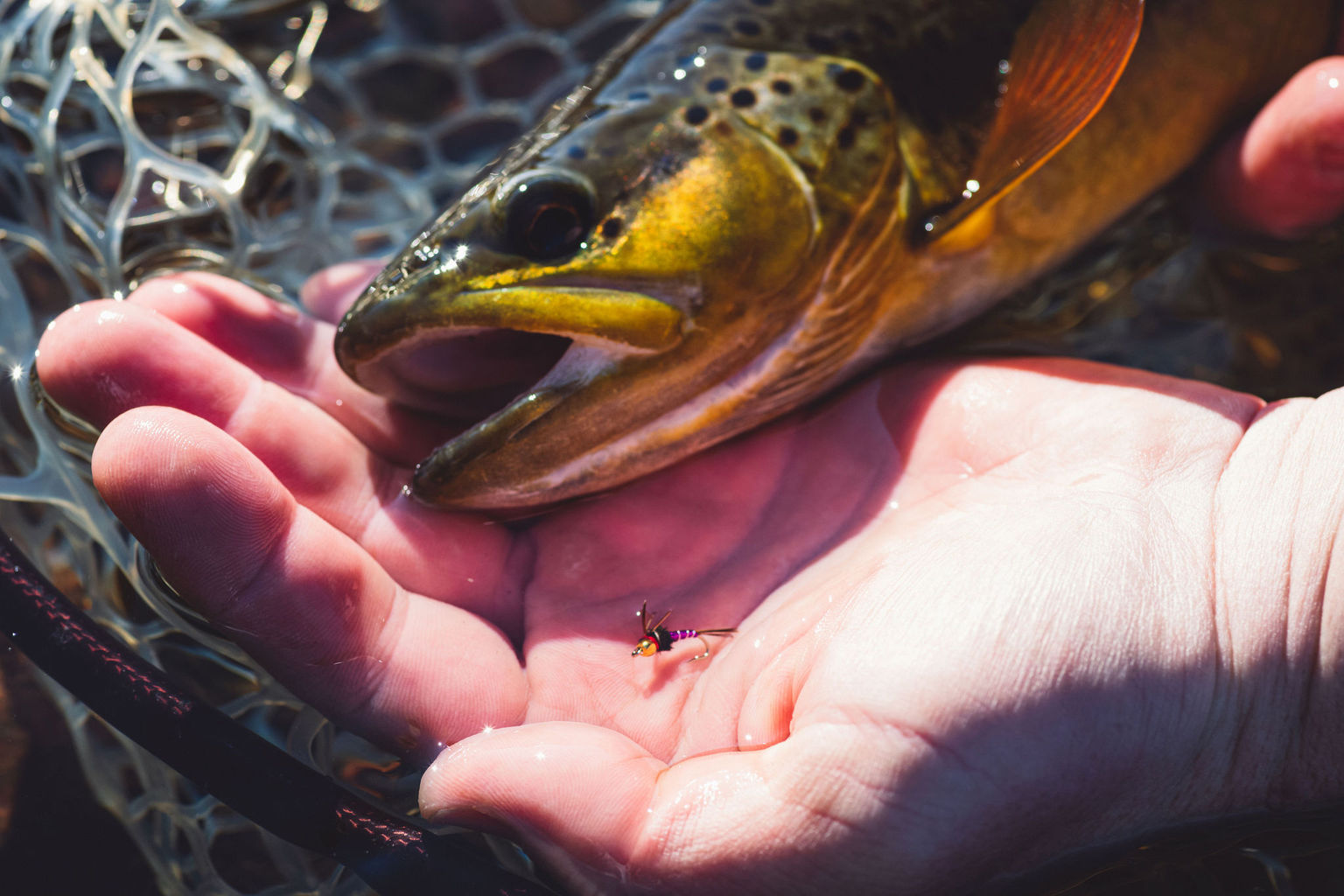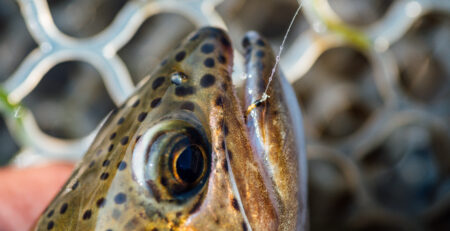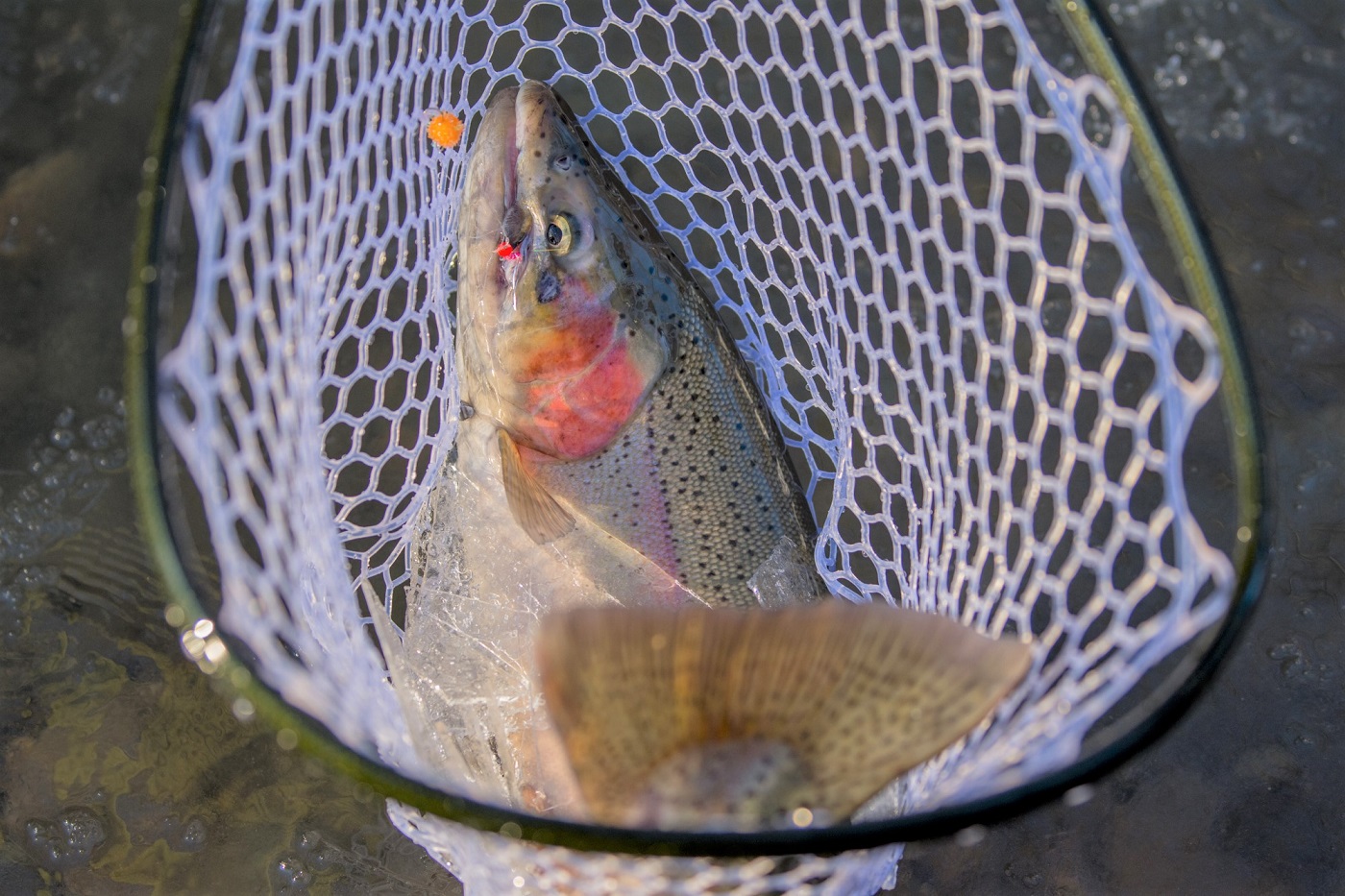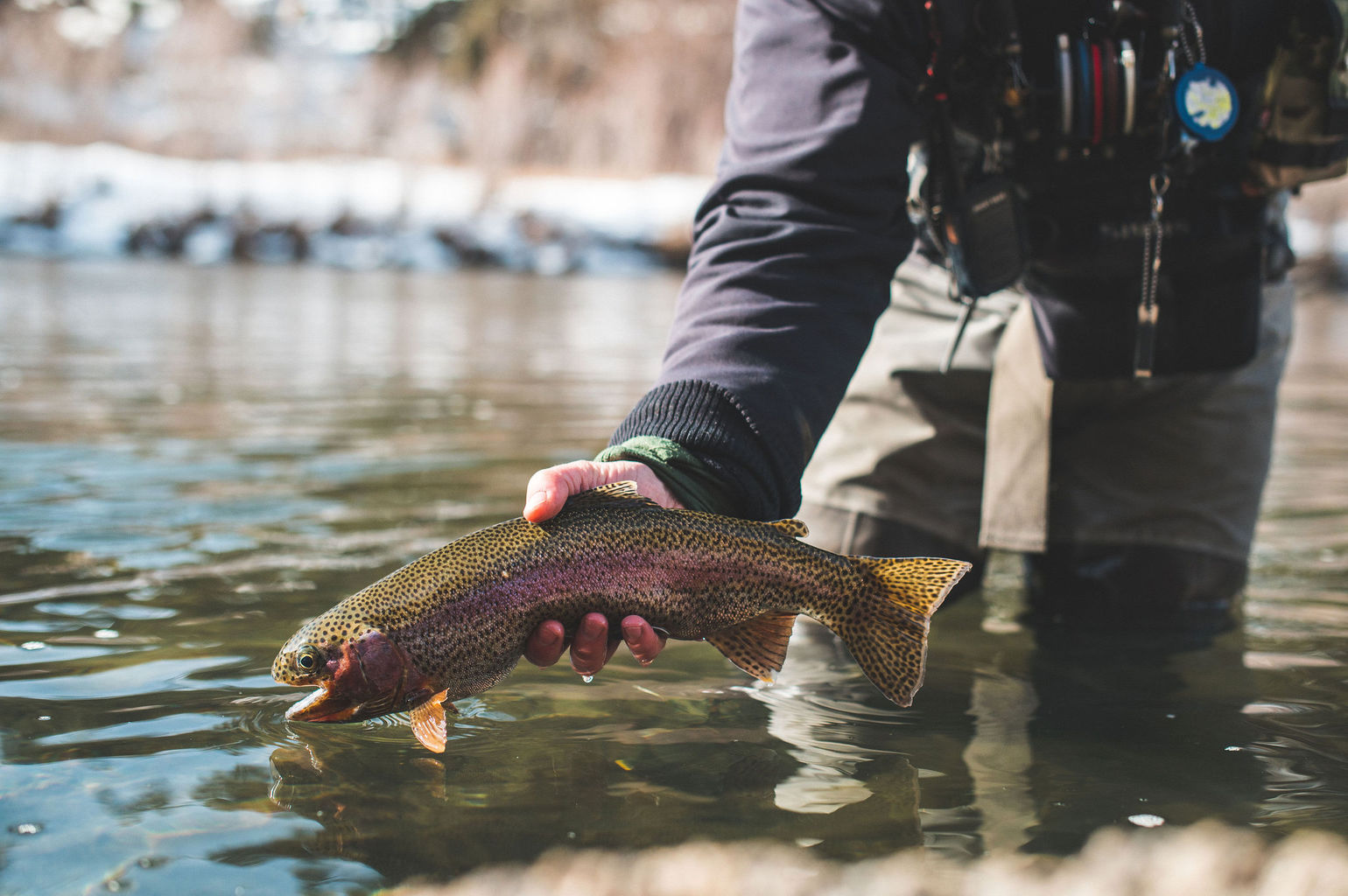The Easy Definition For Newcomers: What is Fly Fishing?
Fly fishing is a type of fishing where artificial lures, called flies, are used to imitate insects, baitfish, crustaceans, and other natural food sources. Rather than using live bait or mass-produced plastic lures, fly fishing flies are all handmade with either feather, hair, fur, and or synthetic materials. Compared to spin fishing, fly fishing requires you to take a more active role which can make it more fun and engaging. Your only limitations will be deep lakes, oceans, and ice − although, greater minds have even found creative ways around them.
The basic concept to fly fishing is to fool the fish into thinking your fake artificial fly is the real, natural food.

Fly Fishing Vs. Spin-Casting
Traditional fishing methods use the weight of the lure to cast. The lure is attached to a thin monofilament line that remains a constant thickness from beginning to end. At the casting end of the fishing line, you tie your bait or lure, which needs to be heavy enough to be thrown at a distance. When you cast the heavy lure or bait out it uses its momentum to drag the line behind it through the air. In basic words, your rod is a sling-shot that flings your bait out and is connected back to you by a nearly weightless line.
In fly fishing, we use very specific fly fishing equipment to cast. The basic setup includes a fly rod, reel, fly line, leader, tippet, and fly. You may be wondering why we can’t simply use a normal fishing line. I wish it was that easy.
But, we can’t use traditional fishing methods because our ‘lures’ weigh practically nothing – so there’s not enough weight to cast. If you’ve ever tried to cast lightweight lures on a spin-casting rod you would have noticed how difficult it was to get any real distance. This is why fly fishing is so different.

Fly fishing uses the weight of the fly line to cast. We use tapered leaders and fly lines designed for transferring momentum from the thickest part of the line down to the thin end where the flies are tied. The tapered fly line is where all the magic happens. Without the fly line we would not be able to cast our lightweight flies. The weight of the fly line is what carries the momentum allowing the fly line to be cast accurately through the air.
Casting nearly-weightless flies on a fly rod requires building momentum and harnessing the kinetic energy of the fly line. This is why fly fishing uses this back-and-forth casting motion. To some, it can look kind of silly, at first.
Though, there are some fly fishing techniques that do not require this back-and-forth ‘false casting’ to make a good cast. For example, the roll-cast and bow-and-arrow cast do not require any false casts. In fact, we may only do this excessive false casting to add line or dry off our flies in the air.
Casting accurately and with complete control is one of the most important things to master in fly fishing – in other words, your presentation. If you learn one thing from this article it is that presentation is king. Even if you fall short of choosing the right fly color or if your fly is a little too small, it’s how you present it to the fish that makes all the difference. Think about it, if you do everything right but can’t make your imitation fly behave like a real insect, few fish will ever bite.
Fly Fishing Flies Vs. Traditional Lures
Now, let’s talk about flies. Flies come in all shapes, sizes, and colors. Flies are made to represent common sources of food for fish, like insects or even frogs and mice! If fish eat it regularly I can guarantee someone has designed a fly to imitate it. The most common insects you should know are mayflies, caddis, stoneflies, midges, and terrestrials – aka grasshoppers, beetles, ants, inchworms, and anything else that doesn’t hatch from the water. Flies can be made out of pretty much anything. Most flies are made from spinning deer hair, dubbing rabbit fur onto the thread, or wrapping chicken feathers around the hook rather than being made out of plastic. This practice of hand-crafting flies is called fly tying.
You can even use fly fishing flies that don’t look like any natural or real food source. These flies are called “attractor flies” and are usually brightly colored, flashy flies designed to turn heads and initiate a reaction.
There are thousands of different flies out there and tons of prey to imitate each with their own way of fishing them. This makes fly fishing a never-ending source of fun and a great life-long hobby.
Fly Fishing Made Easy 👍
Our Quarterly Fly Club ships 1,000’s of flies to anglers all across the United States. Receive curated fly assortments selected for the season with in-depth articles on how to fish them. Great for beginners to learn and for intermediates to discover new flies.

